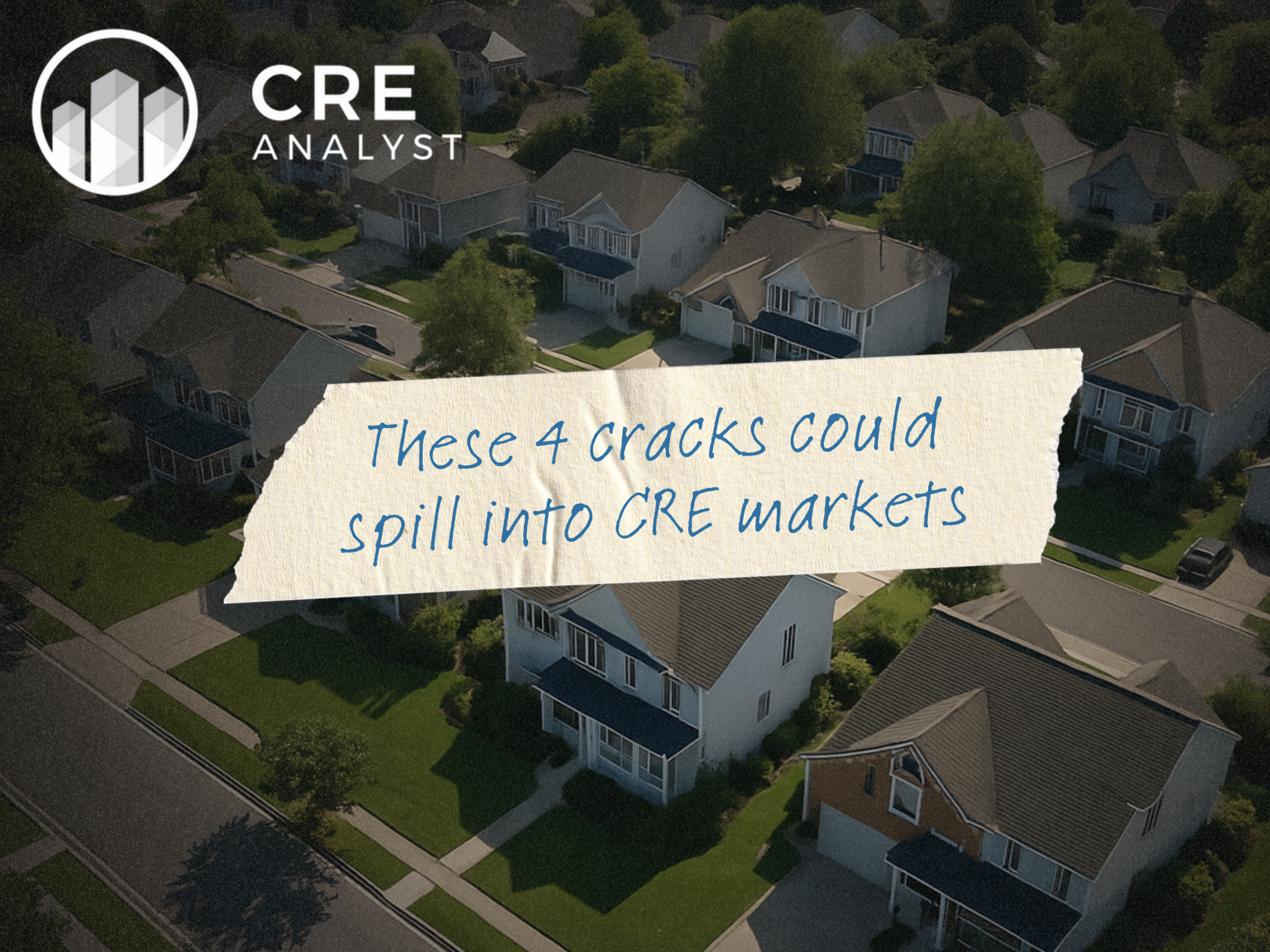
6 hours ago • Visible to anyone on or off LinkedIn
Trade drama is hitting the housing market and could spill into CRE.
Four signals worth watching:
---- Ten year treasury yields ----
Normally, when recession risks rise, investors buy Treasurys and yields fall. That softens mortgage rates and supports housing. But after the tariff news, the 10-year yield rose.
Big red flag.
What changed? Could be a few things: Investors afraid of inflation, funds closing out losing positions, or--worst case--foreign buyers backing away from U.S. debt.
If mortgage rates stay high, affordability gets worse for residential and commercial owners.
---- FHA mortgage delinquencies ----
FHA borrowers, often first-time buyers with limited savings, are starting to miss payments.
Delinquency rates just hit 11%, the highest since 2013 (excluding COVID spikes).
Nearly half of these bad loans were issued after 2020, when buyers stretched to get in.
These borrowers were banking on refinancing when rates dropped, but that seems less likely to happen now. If job losses follow the tariffs, this group could be the first to crack.
---- Private vs. public values ----
Shares of single-family rental giants Invitation Homes and AMH are trading at big discounts to NAV: 23% to 30%, per Green Street.
Their shareholders are institutional players with real-time data on home values and required risk premiums.
If they’re pricing in a correction, it’s might not be noise.
When public markets go cold, private capital usually follows.
---- Builder incentives ----
New home inventory is piling up. And builders are more like department stores than real estate companies. They have to move their inventory.
To do that, they’re offering bigger incentives: rate buydowns, closing credits, even outright price cuts.
Lennar and others are currently discounting by more than 10%, which is a meaningful increase from a year or two ago.
This tells us that demand relative to inventory is soft, especially in oversupplied Sunbelt markets. And builders are adjusting faster than sellers in the resale market.
Check out the WSJ's recent article "How to Tell What Your Home Will Be Worth in a Trade War" for a more detailed dive into these indicators.
Four signals worth watching:
---- Ten year treasury yields ----
Normally, when recession risks rise, investors buy Treasurys and yields fall. That softens mortgage rates and supports housing. But after the tariff news, the 10-year yield rose.
Big red flag.
What changed? Could be a few things: Investors afraid of inflation, funds closing out losing positions, or--worst case--foreign buyers backing away from U.S. debt.
If mortgage rates stay high, affordability gets worse for residential and commercial owners.
---- FHA mortgage delinquencies ----
FHA borrowers, often first-time buyers with limited savings, are starting to miss payments.
Delinquency rates just hit 11%, the highest since 2013 (excluding COVID spikes).
Nearly half of these bad loans were issued after 2020, when buyers stretched to get in.
These borrowers were banking on refinancing when rates dropped, but that seems less likely to happen now. If job losses follow the tariffs, this group could be the first to crack.
---- Private vs. public values ----
Shares of single-family rental giants Invitation Homes and AMH are trading at big discounts to NAV: 23% to 30%, per Green Street.
Their shareholders are institutional players with real-time data on home values and required risk premiums.
If they’re pricing in a correction, it’s might not be noise.
When public markets go cold, private capital usually follows.
---- Builder incentives ----
New home inventory is piling up. And builders are more like department stores than real estate companies. They have to move their inventory.
To do that, they’re offering bigger incentives: rate buydowns, closing credits, even outright price cuts.
Lennar and others are currently discounting by more than 10%, which is a meaningful increase from a year or two ago.
This tells us that demand relative to inventory is soft, especially in oversupplied Sunbelt markets. And builders are adjusting faster than sellers in the resale market.
Check out the WSJ's recent article "How to Tell What Your Home Will Be Worth in a Trade War" for a more detailed dive into these indicators.
PS -- We focus (on LinkedIn and in our courses) on frameworks instead of narratives. If you want to dive into these frameworks that define our industry, DM us to discuss our upcoming FastTrack cohort.

COMMENTS